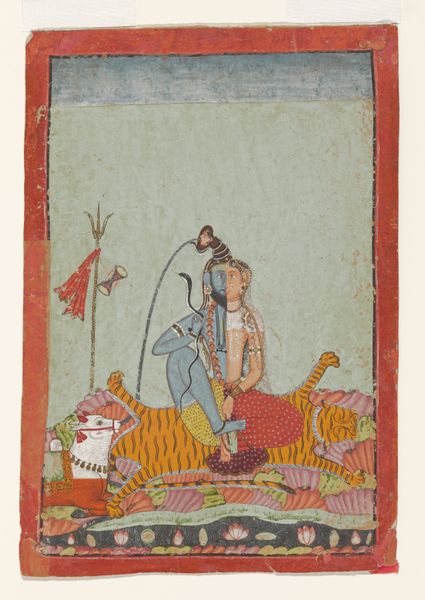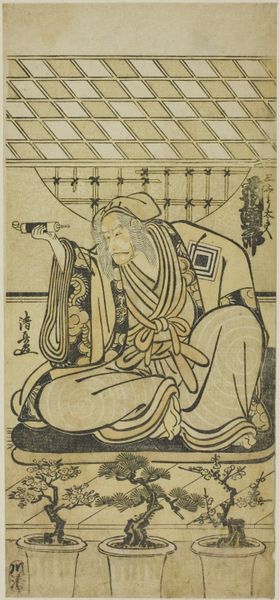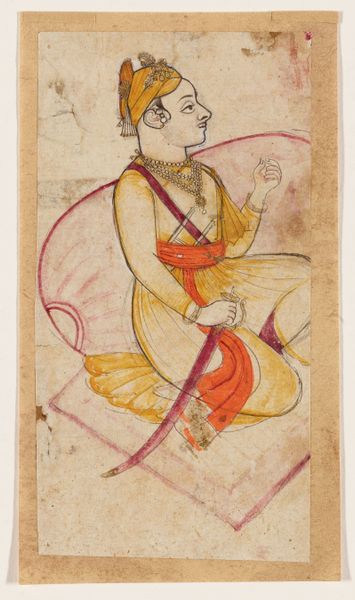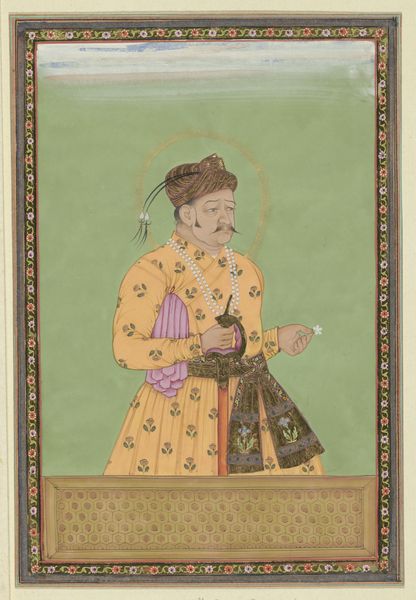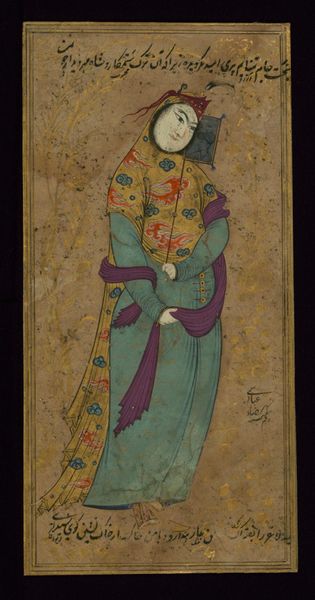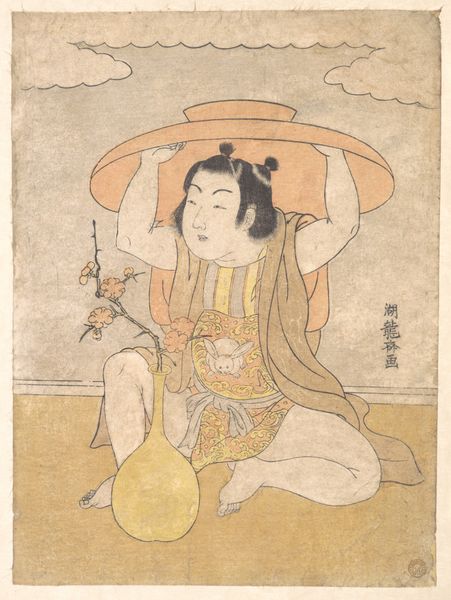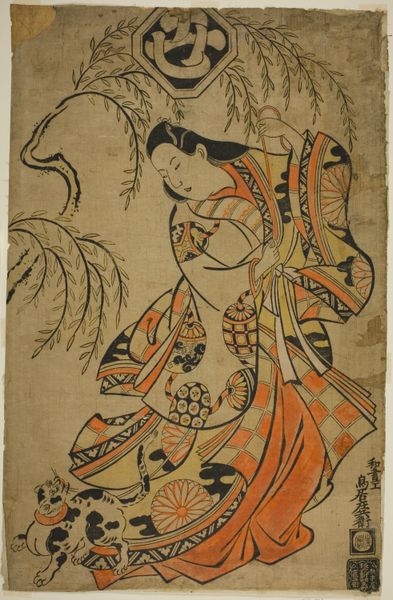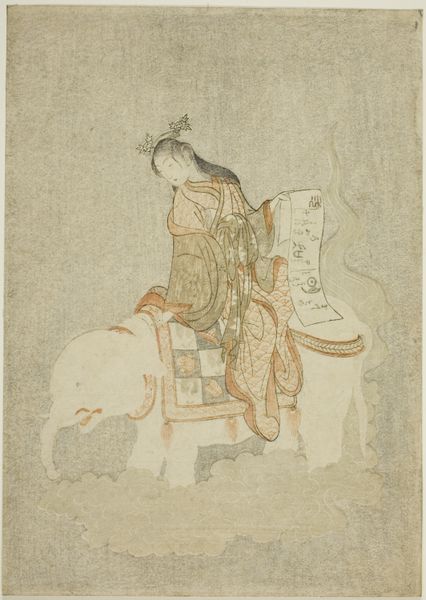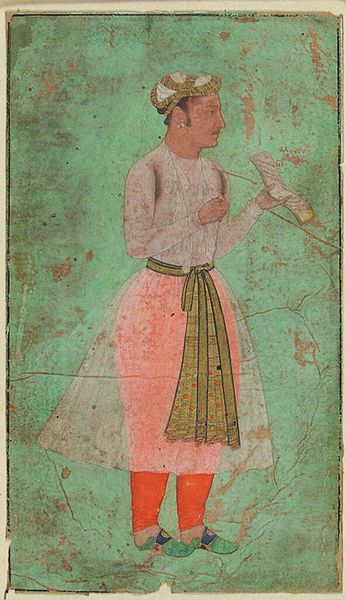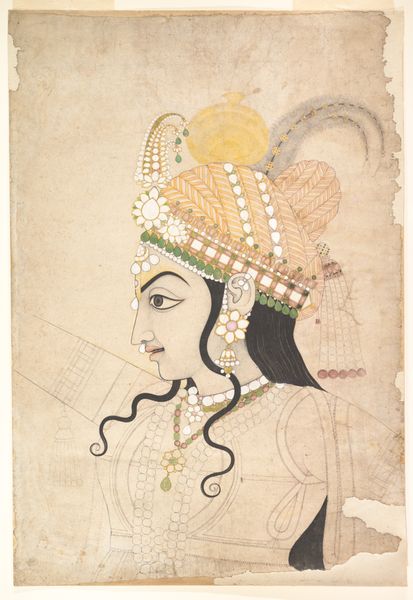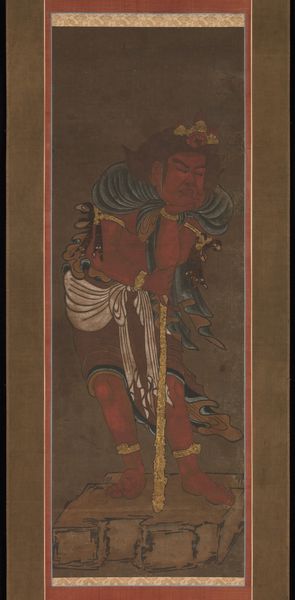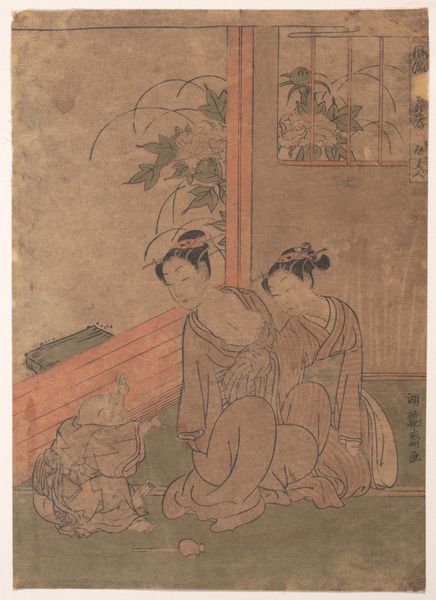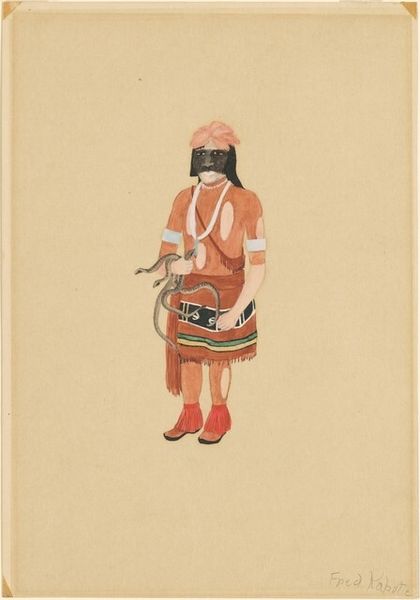
drawing, paper, ink
#
portrait
#
drawing
#
water colours
#
asian-art
#
figuration
#
paper
#
ink
#
coloured pencil
#
islamic-art
#
miniature
Copyright: Public domain
Curator: Right, let's take a look at this fascinating drawing, attributed to Reza Abbasi, entitled "Youth Kneeling and Holding Out a Wine-Cup". It is executed with ink and watercolors on paper. Editor: Oh, what a delicate scene! The soft palette, the tender gesture... it evokes such a gentle, almost melancholic mood. Curator: Indeed. Abbasi, who headed the Isfahan school of manuscript painting, revolutionized Persian miniature painting. Before him, depictions of humans served narrative purposes, but here? It’s all about capturing the essence and personality of a single, ideal figure. Editor: He’s practically radiating world-weariness with that posture and those eyes, isn’t he? Yet, there’s a certain beauty in his languor. And that stylized surrounding…is that a garden? Curator: Potentially. Consider it a theatrical backdrop, placing our elegant protagonist centre-stage, set apart from everyday societal happenings. You will notice elements such as the trees and decorative sprigs, executed as vignettes, existing outside reality. What matters here is the youthful cupbearer presenting his offering of wine – an allegory, of course, alluding to notions of love, grace and poetic inspiration which were common cultural emblems. Editor: Ah, now the wine-cup makes sense. A symbol, not just refreshment. Funny how an object can shift its entire meaning when placed in a particular setting or symbolic relationship. Curator: Exactly, it signals a turn towards the self. Persian art until this point often was devotional or documented imperial triumphs; this is about appreciating aesthetic beauty as its own ideal. Look at the layering of colour—such masterful manipulation of a single tone of diluted pigment. Editor: It is amazing. It's incredible to imagine something so intimate, born from such meticulous craft, whispering secrets from centuries ago. This little wine-cup offers us the chance to become time travelers… cheers to that. Curator: A poignant note, to which I'll add: study, in particular, the institutional context for how works such as these circulated amongst society in the 17th Century to fully realize its implications today.
Comments
No comments
Be the first to comment and join the conversation on the ultimate creative platform.
